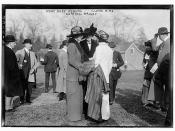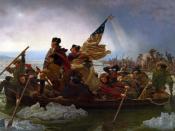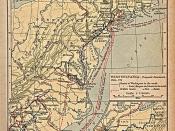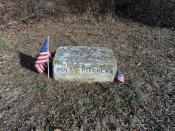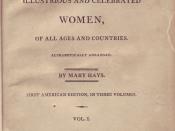Mary Ludwig Hays was one of the many heroines of the American Revolution, who fought for the freedom of America. Hays is living proof of the bravery and remarkable challenges women were able to face and succeed in. Although she had to play limited roes because of gender, she overcame these societal difficulties. Hays showed the world what women can do if given the chance to do it. Mary Ludwig Hayes was an American woman, who fought in the War of Independence, and made a lasting impression on the lives of future generations.
Mary Hays was born in 1754, near Trenton, New Jersey. She was the daughter of John and Gretchen Ludwig. Her father was German, and her mother was Dutch. Mary grew up on a farm, with her two brothers. As a girl, she did her household daily chores of feeding the chicken, making food, and cleaning. Early in the American Revolutionary War, her brother Joshua Ludwig left to be a sailor, and her other brother Joseph Ludwig was sent off to be a soldier.
In 1766, when Mary was about twelve, she moved down to Carlisle, Pennsylvania, to work as a servant in the home of Colonel William Irvine. In 1769, at the age of fifteen, Mary returned to her parent's home where she married a young barber by the name of John Casper Hays.
Mary Ludwig's husband enlisted as a gunner in the First Pennsylvania artillery in 1777. As many wives did at the time, Mary stayed with her husband at camp and battle sites. The women cooked, washed, lugged buckets of water and baggage, aided the sick or wounded, and helped with the cannons. She and her husband spent a hard winter at Valley Forge with little food, and barely any clothes on their backs. The army of about 10,000 lived in crude huts built by the soldiers themselves. Mary stayed with her husband and did what she could do as a woman for seven years of the Revolutionary War.
The Battle of Monmouth was the one battle that made Mary Ludwig famous. On June 27, 1778, the British army, led by Henry Clinton, had left from Philadelphia to retreat across New Jersey. General George Washington, with 8,000 men followed behind the British. Washington had planned to attack the enemy's left wing, while General Charles Lee, with a force of 4,000 men, would attack Clinton until Washington arrived. Lee ordered an attack, but the army was thrown into confusion, and they began to retreat. Washington's troops were stationed on a hill in Monmouth County, New Jersey. Mary's husband was firing one of the cannons. This is where Mar Hays earned the name "Molly Pitcher,"ÃÂ because she carried a pitcher of water to cool down the cannons. During one point in the battle, John Hays fell to the ground and could continue no longer. Mary bravely took over the cannon and Hays fell to the ground and could continue no longer. Mary bravely took over the cannon and shot it. Private Joseph Martin watched Hays during the battle and recorded in hi journal that she "attended with her husband at the piece the whole time. While in the act of reaching for a cartridge and having one of her feet as far before the other as she could step, a cannon shot from the enemy passes directly between her legs without doing any other damage than carrying away all the lower part of her petticoat. Looking at it with apparent unconcern, she observed that it was lucky it did not pass a little higher for in that case it might have carried away something else, and continued her occupation."ÃÂ It is said that she continued firing throughout the blistering afternoon. Her hands and dress were black with gunpowder, but she stayed at her cannon and by wounded began to be carried away. She learned that her husband was not too badly injured. The Americans lost 230 wounded or killed. The British lost 249. Although much of the details of her heroic act are lost, the fact of her importance in the war is very real.
After the battle, General George Washington invited Mary to his headquarters, and congratulated her for the courage she showed. Washington made Mary Hays a sergeant and gave her a badge of honor. When the war ended in 1783, Mary and John Hays returned to Carlisle, Pennsylvania. After her husband John's death in 1789, she married George McHauley and had a son, John Hays Jr, who became a fine soldier in the war of 1812. For her work in the war, she was rewarded with a yearly pension of forty dollars by the state legislature of Pennsylvania. Mary continued to live out her life working hard, washing clothes for rich people and taking care of their children.
Mary Ludwig Hays participated in only a brief moment of American History. Although her story is mainly a legend now, she was a real and she made a lasting footprint for women's history. Because Mary Hays was a woman, she was looked upon as the "weaker"ÃÂ by all of society. With her courage, she was looked upon as the "weaker"ÃÂ by all of society. With her courage, she overcame this view of being the weaker, and proved that women can be strong. She was a woman who fought in the American Revolutionary War, which won the freedom of American. She left a legacy of valor and patriotism, and she still stands today as an example for all Americans. Mary Ludwig Hays is proof that women can do anything that men can, and maybe even better.
